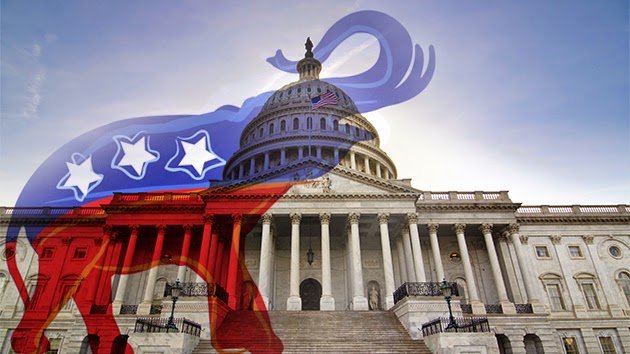The GOP’s Big Tent Approach in 2014
In 2013, Governor Chris Christie won his reelection in a bright blue state by a crushing margin, and set the stage for Republicans to win big in 2014. Governor Christie as a candidate and Republican Governor has harnessed the ability to garner support from a variety of people including moderate Democrats. As America headed into the 2014 midterm elections, voters wanted to overhaul DC and the GOP was the party who showed them they could do it.
West Virginia Senate candidate, Shelley Moore Capito soundly defeated her Democratic opponent, Natalie Tennant, making her the first female senator from West Virginia in 55 years. However, Capito wasn’t the only Republican candidate making history on November 4th. Tim Scott in South Carolina became the first African American elected to the United States Senate, and the first black elected since the Reconstruction. In Iowa, Joni Ernst secured a Republican hold on the upper chamber in 2015 by ending a 30 year run for Iowa having at least one Democrat in the Senate.
It is safe to say, the Republican party received a face lift in 2014, and is now the epitome of diversity. Leveraging the disgust and frustration felt by voters, the Republicans cashed in on the change promised to Americans in 2008. With January only weeks away, the GOP is embracing their win and big tent.
After a grueling couple of elections and watching America suffer by the grips of President Obama, Republicans came back stronger than ever and embraced the changing landscape and demographic of voters by adopting a big tent approach. The Big Tent approach was used during the latter half of the 19th century and beginning of the 20th, the Republican Party boasted membership of big business interests, laborers (both of whom supported the GOP’s tariff strategy) as well as many African-Americans, due to Republican Abraham Lincoln’s abolition of slavery and the party’s stance on civil rights.
A Republican wave swept the country on November 4th, and quickly showed Americans, diversity was a pillar of the party. Mia Love, from Utah was raised by Haitian immigrant parents and was eager to help update the older white male image that has plagued the GOP for the past few election cycles. When it comes to Millennials, Elise Stefanik has closed the gap. At the age of 30, Stefanik hit the trail touting bipartisanship and reminded young voters why it’s cool to be Republican.
2014 served as an unveiling of a more diverse Republican Party, and have quickly become the party of opportunity. Republicans are now setting their sights on getting America back on track in time for 2016.

